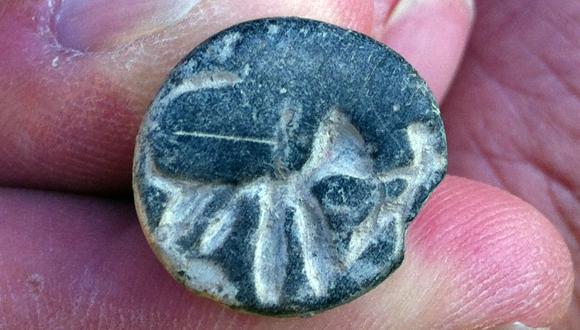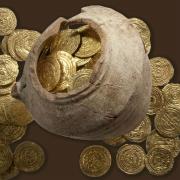TAU Archeologists Find Potential Evidence of Biblical Samson's Existence
A seal found at Tel Beit Shemesh could be the earliest depiction of the tale of Samson battling the lion
A team of TAU archeologists has found a small seal, carved in stone and measuring 1.5 centimeters in diameter in the excavations of Tel Beit Shemesh. The seal depicts a human figure next to a large animal and could be, according to excavation director and TAU professor Shlomo Bunimovitz, evidence of the Biblical story of Samson fighting a lion.
Samson's story is mentioned in the book of Judges, which estimated by researchers to be set in the 11th century BCE – roughly the period when the seal is believed to have been created. Prof. Bunimovitz claims the seal could be linked to the Biblical story precisely because of this confluence of circumstances - the seal was found in proximity to where Samson is believed to have lived, during the appropriate time period when it is clear a story was being told of a man who battled a lion. It's possible that the seal and the Bible are telling the same story.
The biblical city of Timna, where the Bible describes Samson's wife living, is located not far from Beit Shemesh. According to Judges 14:5, Samson was on his way to his engagement party when "a young lion roared against him". After Samson kills the lion he uses the story to entertain the guests at his party, giving birth to one of the most famous riddles in Western history: "Out of the eater came forth food, and out of the strong came forth sweetness" (Judges 14:14 ). The newly found seal is the first physical evidence researchers have found of the Biblical story.
Ancient Cultural Context
Along with the seal, two structures were discovered, which were apparently used for ritual purposes during the same time period. In one of them researchers found a kind of table, resembling an altar, next to which a large number of animal bones were found. Prof. Bunimovitz believes the animals may have been used for sacrifices.
A vital part of the Biblical stories about Samson and Beit Shemesh is a border mentioned in the Bible between the area occupied by the Philistines and that occupied by local people, at first Canaanites and then the people of Judah. The animal bones found at Tel Beit Shemesh help authenticate and provide context for this portion of Biblical tale as well.
A few kilometers west of Beit Shemesh, the TAU team found a large number of pig bones, showing the people in that area ate large amounts of pork. At Tel Beit Shemesh, on the other hand, very few pig bones were discovered – none at all after the 11th century BCE. Prof. Bunimovitz believes that when the pork-eating Philistines arrived in the country from the Aegean, the local population stopped eating pork deliberately to set themselves apart from the foreigners.






